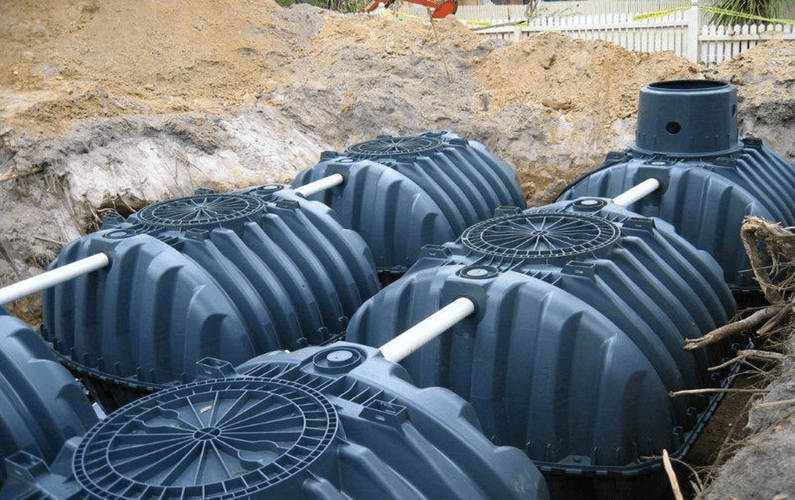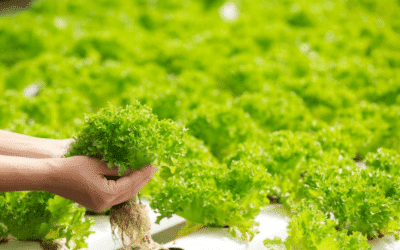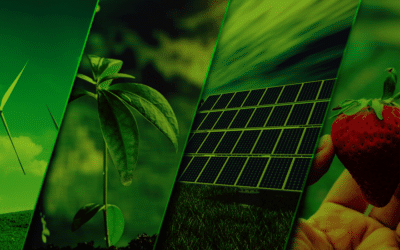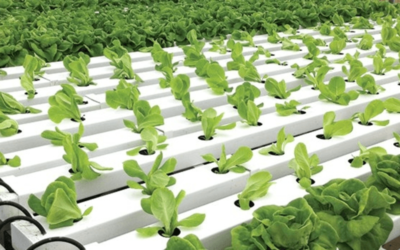When was the last time you thought about your water consumption? During times of drought we are all reminded of how necessary a steady supply of water is to our lifestyle. If all you have to do is turn on a tap, it’s easy to take this limited resource for granted.
But as the cost of potable water increases, the idea of collecting and utilising rainwater becomes even more attractive. Not only will it reduce your monthly expenses, it also means you’ll never be without water. And if you consider how much water you use every day for cooking, cleaning and consuming, it makes sense to reduce costs. In this article we’ll aim to answer some of the more common questions about rainwater harvesting.
What is rainwater harvesting?
Simply put, rainwater harvesting means having some kind of tank which you can use to store collect rainwater. It could be as simple as a large tank connected to your downpipes, or in the case of a purpose-built green smart home, a tank that is possible buried underground.
Without filters in place, rainwater is not potable and cannot be used for human consumption. But you can use it in other ways:
- Washing your car and watering your garden
- Flushing your toilets
- Topping up your swimming pool
- In your washing machine
However, if you install an underground tank, you can add a fine filter and a pump to channel clean, potable water right into your home. That way you can use the water you’ve collected for showering or bathing and cooking.
What size of tank do I need?
This depends on several factors. First of all you need to know the average rainfall for your area. Then you also need to think about how you will use the water you collect. If you’re only going to use it for irrigating your garden, topping up your pool and washing your car, then you may not need such a big tank. But if you want to also use the water you collect in your home, you’ll need a larger tank to ensure you collect as much water as possible.
The size of your roof and the material it’s made from will also influence the amount of rainwater you’ll be able to collect. You should also factor in the number of people in the home and how much water you use on a daily basis.
Discuss your situation with an expert and they will help you determine what you need. They’ll also be able to advise you on the best placement for your tank, and how to maximise the amount of water you collect. The placement of the collecting pipes is important in allowing you to collect as much water as possible.
Can underground rainwater tanks be retrofitted to an existing home?
Provided you have the space to do it, you can install an underground rainwater harvesting tank on an existing property. While it is much easier and cheaper to incorporate a tank into a new development, it can still be done for an established home. You may only be limited to the size of the tank you can install.
Underground rainwater tanks have some advantages over external tanks. They are hidden away so they don’t detract from your home’s appearance. And they may last longer because they’re not exposed to the damaging effects of the elements. Even the pipes can be buried to make sure the whole installation is neat and attractive.
How does the municipality charge me for sewerage effluent?
It might not cost you anything to collect and use rainwater, but you will still be charged for anything that flows through your pipes as effluent. In general, they tend to charge on volume, so the more water you use, the more you pay.
But this cost is based on the volume of water you draw. In other words, you will only be charged on the amount of water that has run through your water metre. So you won’t be charged on the rainwater that you collect and use. And if you re-use your grey water (from your bath or laundry) you can reduce the amount of water you send to the sewer for treatment down to as little as 5%. That is a tremendous saving for you and for our water resources.
But remember that there are rules governing the use of grey water. Because it has qualities that allow anaerobic bacteria to breed, it cannot be stored and must be disposed of safely. It must be sent through your sewerage system and not re-directed to a river or other water sources.
If you’re using the grey water from your laundry to irrigate your garden, don’t use detergents that contain phosphates. These will poison the soil in the long term, so look for a phosphate-free washing powder.
Can I use rainwater in conjunction with municipal water?
If you’re concerned that your water tank may not always be able to provide for your needs, you can rest assured that most rainwater harvesting tanks provide for an emergency supply. A sophisticated rainwater harvesting system uses a low water threshold sensor to automatically switch over to use municipal water directly, before your own rainwater supply runs dry. With such a system, nothing further is required for a continuous supply to where rainwater is designated.
What about electricity outages?
In the case of a power cut, these tanks have an override that allows you to switch over to the municipal supply. Thus provided there isn’t a water outage happening at the same time, you’ll still have access to water.
Do I have to clean the tank out?
Most tanks are self-cleaning so you’ll never have to worry about getting your hands dirty. A cleaning mechanism ensures that any sediment is flushed to keep your tank clean. It also helps to oxygenate the water and prevent anaerobic bacteria from building up. Most tanks also include some kind of screen or net to stop insects and debris from entering the tank.
You’ll also find that rainwater harvesting tanks require very little maintenance. When you consider how easy they are to operate, and how much money you can save, installing a rainwater harvesting tank is one of the best things you can do for your home.
What are rainwater harvesting tanks made from?
The tanks can be made from a variety of materials such as steel, plastic and even concrete. But the most common kind of water tank is usually made from high-density polyurethane. This is one of the safest food-grade plastics available. So you needn’t be concerned that any toxic chemicals will leech into your water. And it shouldn’t affect the taste of your water either.
How long will a rainwater harvesting tank last?
While this depends on the material used to construct the tank and where it’s positioned, most tanks will last you for a few years before they need replacing. If your tank is exposed to the elements, you can expect it to degrade at a faster rate. When a tank is buried underground, it will last much longer because it is protected from the sun, rain and wind.
Is it worth collecting rainwater in a low rainfall area?
The answer to this question depends very much on how you value the water you currently use. If you look at it merely in financial terms, it could be that the cost of installing a rainwater harvesting system is too great compared to the potential savings on your utility bills.
However, the value of water cannot be reduced to a sum of money. Water is necessary for a number of essential human activities such as bathing and cooking. These activities add significant comfort to our modern lives and if you have to consider the alternative, you’ll appreciate just how important it is. And if you use rainwater to irrigate you vegetable garden, it also contributes towards feeding your family. This means you save even more money than just that on your water bill.
Even during times of sufficient rainfall, it is essential that we use water sparingly and make every drop count.
Tips for using water efficiently
Should you already have a rainwater harvesting tank, it’s still important to make the most of your water. So here are some tips to make your store go even further:
- Switch your irrigation system to manual and only use it when necessary.
- Water your garden either early in the morning, or later in the evening when it’s cooler. That way the water will feed your plants instead of just evaporating away.
- Reuse grey water from your bath or washing machine to water your garden. But be sure to follow the rules regarding the use of grey water.
- While waiting for water to heat up, don’t let the cold water go to waste. Collect it and use in your kettle or for cooking, or to water pot plants.
- Load up your washing machine or dishwasher before you switch it on. Don’t waste water on small loads.
- Install a low-flow shower head and limit your time in the shower to five minutes.
There are many little ways to save water and they should not be overlooked, even if you are collecting rainwater. Adopting a green and eco friendly lifestyle should be about more than saving money. It’s about changing your attitude towards natural resources and reducing your impact on the planet.
The benefits of harvesting rainwater
The main benefit of investing in a rainwater harvesting tank is a financial one. You can save up to as much as 80% of your water bill. Of course the final figure will depend on the size of the tank you install and what your general water consumption is like. Remember, you can stretch any saving you would enjoy even further by incorporating some of the water saving tips suggested above.
You’ll also have the benefit of a consistent supply of water during times of drought or when the municipal system is switched off to carry out repairs and maintenance. It may surprise you that adopting a green and eco friendly living practice could actually make your life more convenient.
For new and existing homeowners, a rainwater harvesting tank represents an opportunity to save money and make a positive impact on the environment. And the ongoing issue of water security is prompting buyers to seek out homes that already have this feature. All green smart homes should include rain harvesting tanks and several other green and eco friendly features that make them ideal for the eco-conscious home buyer. These homes are particularly water and energy efficient, even going so far as to include a water-wise, low maintenance garden. In the future, we will all be forced to think about the way we use water and make drastic changes.








